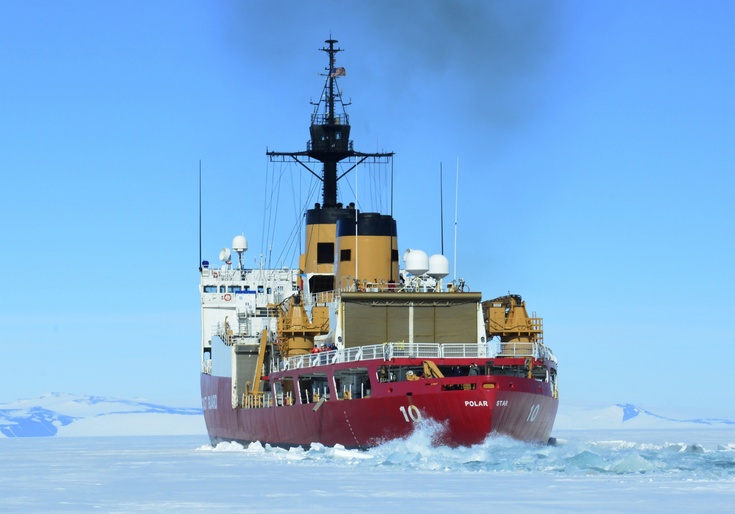A recent White House memo directs the Pentagon and other executive departments to provide a roadmap by early August for creating a security fleet of icebreaker ships, Fox News reported Monday.
The move to acquire icebreaker ships signals Washington’s recognition of the Arctic and Antarctic regions' increasing geopolitical significance, as well as a willingness to stand up to China and Russia.
The memo comes at a time when the United States has minimal strategic capabilities in the polar regions—there is not a single U.S. port in the Arctic capable of housing icebreaking ships. This shortcoming is addressed by the memo, which orders a search for at least two "optimal" U.S.-based port locations and two international port locations.
Military authorities say the need to bolster U.S. operations in the polar regions is immediate.
"We really don't have the ability to project the presence we need to project in both the Arctic and the Antarctic," Vice Admiral Scott Buschman, the Coast Guard's deputy commandant for operations, told Fox News.
"We do need additional polar icebreakers to do what we need to do both in the Antarctic and the Arctic at the high latitudes," he added. "In the past they used the term, 'six, three, one.' We need six icebreakers, at least three of which are heavy icebreakers. And we need one now."
The gap between America and its competitors in Arctic operations and power projection is substantial. Russia has a fleet of six heavy-class icebreakers and pledges to double that number in the next decade. Meanwhile, Beijing announced plans to build its own icebreaker ship late last year. The two nations have increasingly cooperated in the region as well.
The United States currently possesses only one heavy-class icebreaker, the 46-year-old USCGC Polar Star, which has been in operation now for more than 10 years past its expected decommission date.
A 2012 U.S. Energy Information Administration report noted that 13 percent of the world’s oil reserves are located in the Arctic, along with up to 30 percent of the world’s undiscovered conventional natural-gas resources.
